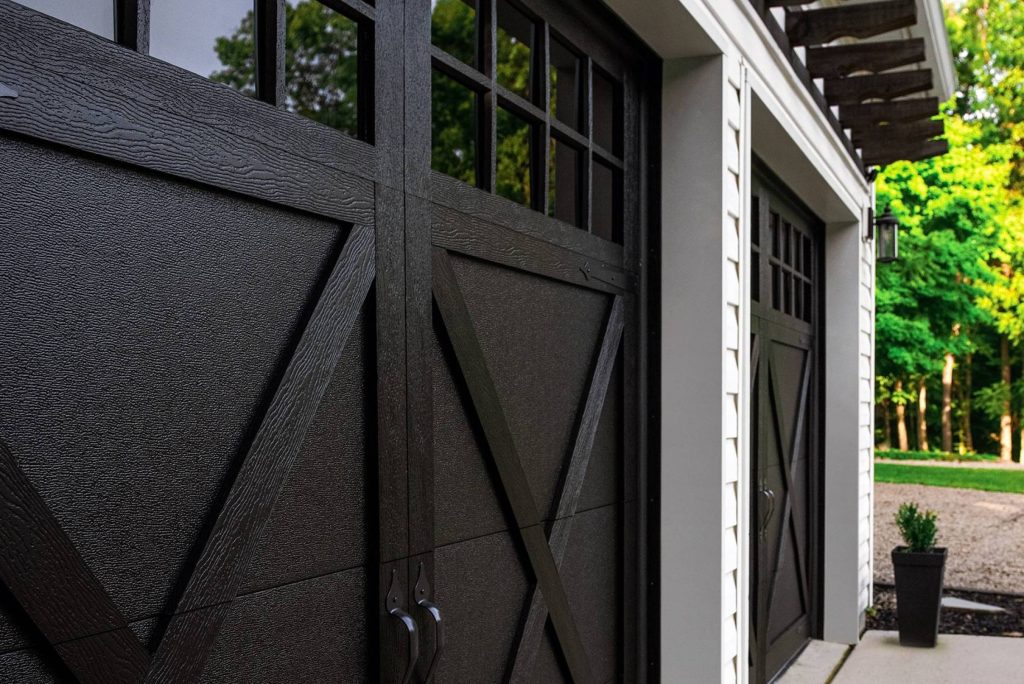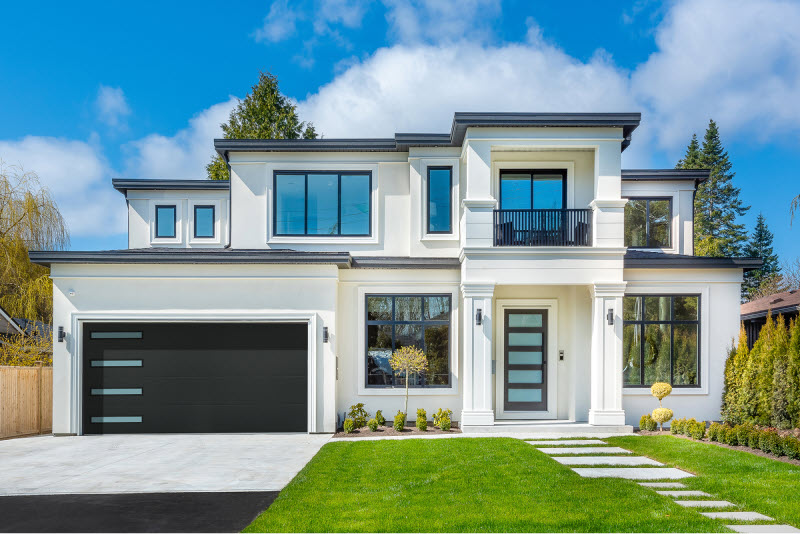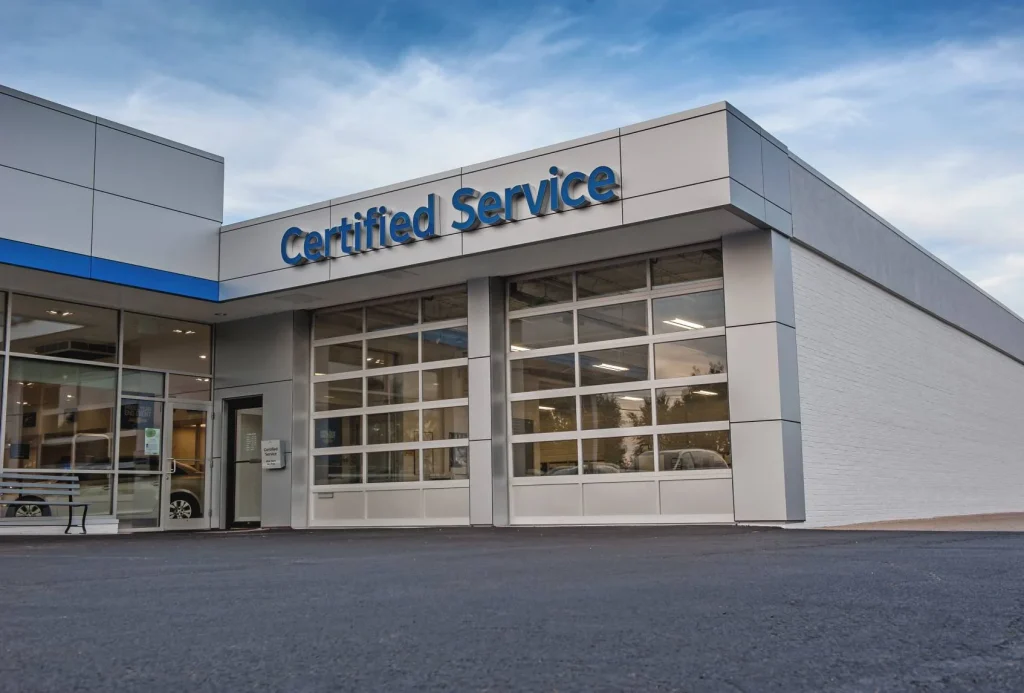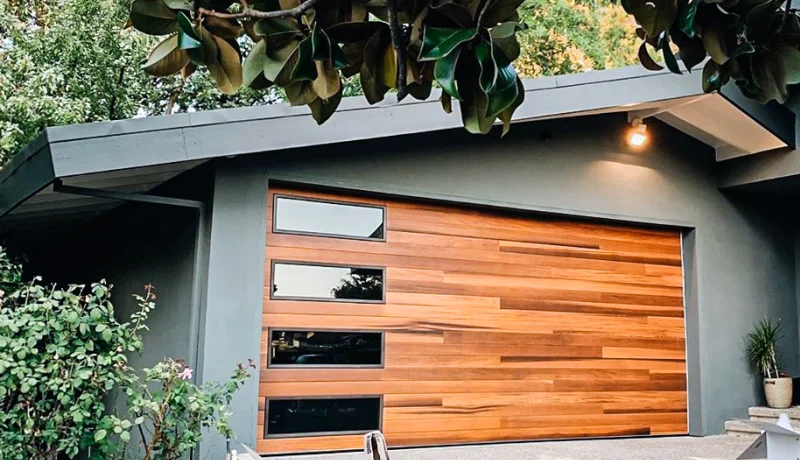Overhead Garage Door in Sterling Heights, MI
Space-Saving Designs for Enhanced Accessibility
Locally Based, Regionally Trusted
Since 2017
Schedule A Service Request
We Serve Businesses In And Around The Following Cities:
About Overhead Garage Doors
Overhead Garage Door Guide for Sterling Heights Commercial Properties
Understanding the Importance of Overhead Garage Doors in Commercial Settings
In the bustling city of Sterling Heights, where commercial properties range from small enterprises to expansive industrial complexes, the choice of facilities can significantly impact the efficiency and operations of a business. Among these facilities, the overhead garage door stands out as a critical component that blends functionality with security. As businesses aim for both profitability and logistical success, the role of an overhead garage door becomes undeniably pivotal. These doors are not merely functional barriers; they represent the gateway to streamlined operations, enhanced safety, and improved aesthetic appeal.
Unlike traditional doors, overhead garage doors offer a unique advantage through their design and functioning. They provide easy access for large vehicles and can accommodate high-traffic environments typical of commercial spaces. Made for durability, these doors can withstand daily wear-and-tear, impacts, and weather conditions, ensuring that businesses in Sterling Heights can operate without unnecessary interruptions. The presence of companies like D&J Contracting in the local landscape further emphasizes the city's commitment to supporting businesses with reliable overhead garage door services.
Moreover, overhead garage doors often serve as a security measure, deterring unauthorized access while safeguarding valuable inventory and equipment inside. The assurance that a well-built door provides is crucial for business owners who prioritize operational integrity and asset protection. As we delve into the specifics of overhead garage doors and their role in Sterling Heights, we aim to provide a comprehensive exploration that caters to the needs and curiosities of local businesses.
The Process of Selecting and Installing Overhead Garage Doors
Choosing the right overhead garage door involves a blend of strategic decision-making and an understanding of specific business needs. Commercial property owners in Sterling Heights need to consider several factors, including door size, material, insulation, and security features. The process begins with evaluating the door's purpose: is it solely for vehicle entry, or does it also need to provide pedestrian access? Considering factors such as frequency of use and the specific security requirements of the business is also crucial.
Material choice is pivotal. Steel is a popular option due to its strength and longevity, suitable for high-security needs, whereas aluminum, while lighter, offers a more corrosion-resistant solution for certain environments. Once the door type is decided, businesses often engage with overhead garage door companies near me, like D&J Contracting, to ensure they receive professional advice and service.
Installation is another crucial aspect where precision comes into play. Ensuring that the door is aligned correctly, balanced properly, and integrates seamlessly with any connected systems, such as security alarms and access control, requires skilled professionals. Overhead garage door service near me routinely emphasizes the importance of proper installation for longevity and performance. Furthermore, businesses must not overlook the significance of repair and maintenance services to keep these doors functioning efficiently over time.
Benefits of Overhead Garage Doors for Local Businesses
The benefits of integrating overhead garage doors into a commercial property are multifaceted. Primarily, these doors improve operational efficiency by facilitating swift vehicle and personnel access. This is paramount for facilities where timely ingress and egress are critical. Overhead garage doors also contribute significantly to energy efficiency. By selecting insulated doors, businesses can regulate indoor climate, reduce heating and cooling costs, and achieve a more environmentally sustainable operation.
In terms of security, commercial properties in Sterling Heights find overhead garage doors indispensable. The robust construction of these doors is often complemented by advanced locking mechanisms and integrated alarm systems. This deters potential intruders and provides owners with peace of mind. Reliable providers like D&J Contracting offer solutions that integrate with existing surveillance and access systems, enhancing the overall security framework of the property.
Moreover, the aesthetic impact of overhead garage doors cannot be understated. Available in various designs and finishes, these doors can align with a company’s branding and improve the visual appeal of a commercial space. In competitive markets, appearance can influence client perceptions, making it advantageous for businesses to invest in doors that project a professional and modern image.
Addressing Common Overhead Garage Door Problems
While overhead garage doors are largely reliable, as with all mechanical devices, they can encounter issues. Understanding these problems and implementing prompt solutions ensures minimal downtime and sustained operational efficiency. One common issue is overhead garage door not working due to power failure or motor malfunction. Often, contacting overhead garage door services near me can quickly diagnose and fix electrical or mechanical glitches.
Another prevalent problem involves overhead garage door springs. Torsion springs, while efficient, experience high tension and can wear out over time. Regular inspections can preempt breakdowns, and when needed, overhead garage door spring replacement must be handled by professionals due to the potential hazards involved. The overhead garage precision door service often includes thorough checks of these critical components, ensuring longevity and performance.
Furthermore, misaligned tracks or worn-out rollers can cause the door to operate sluggishly or noisily. Overhead garage door repair services typically include realigning tracks and replacing rollers or bearings to ensure that the door functions smoothly. By prioritizing regular maintenance, businesses can prevent disruptive failures and extend the lifespan of their overhead garage doors.
Real-World Applications in Sterling Heights Commercial Properties
In Sterling Heights, the real-world application of overhead garage doors is evident across diverse business sectors. Warehouses heavily rely on these doors to accommodate frequent shipments, requiring robust doors with high operational reliability. Automotive service centers favor overhead garage doors for easy vehicle access and to maintain a controlled indoor environment suited for mechanical work.
Retail businesses and shopping complexes utilize these doors primarily for secure delivery and storage areas, ensuring a seamless flow of goods without compromising security. Even in the hospitality industry, where aesthetics merge with functionality, overhead doors serve entrance facilities, parking areas, and service docks with equal importance.
Moreover, overhead garage doors play a crucial role in bespoke construction projects that require custom door solutions tailored to unique architectural designs or operational needs. Companies like D&J Contracting in Sterling Heights specialize in offering custom solutions, adapting door size, material, and functions as per specific industry requirements.
Through these applications, the benefits of overhead garage doors transcend basic access and security functions, becoming integral to business operations, service delivery, and even brand identity.
Cost Considerations and Investment Value
When contemplating the purchase and installation of overhead garage doors, Sterling Heights business owners should view the expenditure as a strategic investment. The costs associated with overhead garage door spring replacement, materials, installation, and even future maintenance represent a commitment to operational excellence and security. Nevertheless, the long-term savings in energy efficiency, minimized downtime, and enhanced security often justify the initial outlay.
It's important to consider the overhead garage door spring replacement cost within the broader scope of equipment life cycle management. Regular maintenance, offered by trustworthy overhead garage door service near me, can mitigate high replacement costs by identifying potential issues early. Businesses are advised to incorporate these costs into their budget planning, considering both upfront expenses and long-term savings.
Furthermore, businesses evaluating the overhead garage doors springs for sale must ensure that such components meet quality standards to avoid frequent failures. High-quality products, although more expensive initially, often deliver better performance and reliability.
Ultimately, investing in premium overhead garage doors reflects a business's commitment to quality and efficiency. By aligning with reputable providers like D&J Contracting, businesses maximize the return on their investment through superior product offerings and reliable service.
In summary, overhead garage doors represent a strategic choice for businesses in Sterling Heights, offering a blend of security, efficiency, and aesthetic appeal. Through informed selections and professional partnerships, business owners can significantly enhance their operational capabilities. This holistic approach not only addresses immediate functional needs but also contributes to long-term success, positioning businesses for growth in a competitive landscape. Sterling Heights can rely on local expertise to ensure that their investment in overhead garage doors is both judicious and beneficial.
Overhead Garage Doors Gallery



Call Us Today to receive your Free Quote for Overhead Garage Door in Sterling Heights
Serving: Sterling Heights, Michigan

About Sterling Heights, Michigan
As a result of the War of 1812 and the 1817 Treaty of Fort Meigs, the area of the Michigan Territory which now makes up Sterling Heights was first surveyed by Deputy Surveyor Joseph Wampler; his survey was approved on February 20, 1818. Wampler had been one of two deputy surveyors of Perrysburg, Ohio, in 1816.
Originally created as part of Shelby Township in April 1827, it was broken off as Jefferson Township in March 1835. In March 1838, it was renamed Sterling Township.
Until the 1950s, Sterling Township was an agricultural area, largely devoted to growing rhubarb and other crops sold in Detroit. Road improvements led to decreased commute times and lower costs for the delivery of goods and services to and from businesses. The population increased when suburban homes were built for the workers in metropolitan Detroit's booming automobile industry. When Sterling Township was incorporated as a city in 1968, "Heights" was added to the name to satisfy a state law that prevents incorporated municipalities from having the same name, as there was already a small village named Sterling in Arenac County.
Gerald Donovan became the first mayor of the city and F. James Dunlop became the first mayor pro-tempore. In the 1960s and 1970s, many residents came to live in Sterling Heights to work in automobile plants operated by Chrysler and Ford. Lakeside Mall opened in Sterling Heights in 1976.
The city is home to many groups of immigrants. It has received many people of eastern European origins, including ethnic Albanians, Bosnians, Croatians, Macedonians, Montenegrins, Poles, Serbians and Slovenians. After the 2003 U.S.-Iraqi War, millions of Iraqi citizens were displaced, particularly Assyrians, whom the majority of which adhere to the Chaldean Catholic Church. Of these, 30,000-50,000 resettled in Sterling Heights, giving parts of the city the nickname "Little Nineveh", especially around 15 Mile Road and Ryan.
Sterling Heights is a second-ring suburb, 14 to 20 miles (23 to 32 km) north of downtown Detroit. The city's southern border is 6 miles (10 km) from Detroit's northern border. The shape of the city is six miles long and miles wide. It is bordered to the south by the city of Warren, at its southwest corner by Madison Heights, to the west by Troy, to the north by Utica and Shelby Township, at its northeast corner by Macomb Township, to the east by Clinton Township, and to the southeast by Fraser.
According to the U.S. Census Bureau, Sterling Heights has a total area of 36.72 square miles (95.10 km), of which 36.45 square miles (94.41 km) are land and 0.27 square miles (0.70 km), or 0.74%, are water. The Clinton River crosses the northeast part of the city, flowing east to Lake St. Clair east of Mount Clemens.
Sterling Heights features a humid continental climate (Köppen: Dfa). Summers are somewhat hot with temperatures exceeding 90 °F (32 °C) on average 8.6 days. Winters are cold, with temperatures not rising above freezing on 39.1 days annually, while dropping to or below 0 °F (−18 °C) on average 1.2 days a year.
Sterling Heights sits on two main thoroughfares:
 M-53 commonly called Van Dyke Avenue or the Van Dyke Freeway (they split in the city, however, and rejoin to its north), which leads north into The Thumb of Michigan.
M-53 commonly called Van Dyke Avenue or the Van Dyke Freeway (they split in the city, however, and rejoin to its north), which leads north into The Thumb of Michigan. M-59, commonly called Hall Road once the freeway ends—which is the east–west connector from just north of Mount Clemens, through Utica as a surface road, and then becomes a limited access freeway to Pontiac, being the main northern connector between Macomb County and Oakland County. In Sterling Heights, large areas are devoted to retail and commercial development (e.g., Lakeside Mall).
M-59, commonly called Hall Road once the freeway ends—which is the east–west connector from just north of Mount Clemens, through Utica as a surface road, and then becomes a limited access freeway to Pontiac, being the main northern connector between Macomb County and Oakland County. In Sterling Heights, large areas are devoted to retail and commercial development (e.g., Lakeside Mall).
- Mound Road is an important north–south artery that runs continuously through the city. Overall, the road starts south in Hamtramck and runs up to 32 Mile Road in Romeo. The road ends briefly at River Bends Park in Shelby Township (becoming Auburn Road), and continues just north of 22 Mile Road.
- East-west travel is mainly on the "mile roads," beginning at 14 Mile Road through 20 Mile Road (M-59). 16 Mile Road, also known as Metro Parkway, is another major "mile road". See Roads and freeways in metropolitan Detroit.
- Utica Road is an important diagonal connector that crisscrosses the city from southeast to northwest, going through the intersection of Dodge Park Road (across from the Sterling Heights city hall) via the first roundabout in Macomb County.
- Dequindre Road is the border between the city of Sterling Heights and the city of Troy. It is also the border between the counties of Macomb and Oakland.
- Hayes Road is the divider between Clinton Township (Between Utica Road and South of M59) and Fraser (Between Masonic and Moravian).
| Census | Pop. | Note | %± |
|---|---|---|---|
| 1940 | 3,648 | — | |
| 1950 | 6,509 | 78.4% | |
| 1960 | 14,622 | 124.6% | |
| 1970 | 61,365 | 319.7% | |
| 1980 | 108,999 | 77.6% | |
| 1990 | 117,810 | 8.1% | |
| 2000 | 124,471 | 5.7% | |
| 2010 | 129,699 | 4.2% | |
| 2020 | 134,346 | 3.6% | |
| U.S. Decennial Census 2018 Estimate | |||
| Race / Ethnicity (NH = Non-Hispanic) | Pop 2000 | Pop 2010 | Pop 2020 | % 2000 | % 2010 | % 2020 |
|---|---|---|---|---|---|---|
| White alone (NH) | 111,743 | 108,750 | 106,149 | 89.77% | 83.85% | 79.01% |
| Black or African American alone (NH) | 1,602 | 6,638 | 8,709 | 1.29% | 5.12% | 6.48% |
| Native American or Alaska Native alone (NH) | 239 | 246 | 200 | 0.19% | 0.19% | 0.15% |
| Asian alone (NH) | 6,100 | 8,713 | 10,935 | 4.90% | 6.72% | 8.14% |
| Native Hawaiian or Pacific Islander alone (NH) | 35 | 16 | 13 | 0.03% | 0.01% | 0.01% |
| Other race alone (NH) | 122 | 158 | 337 | 0.10% | 0.12% | 0.25% |
| Mixed race or Multiracial (NH) | 2,965 | 2,655 | 4,728 | 2.38% | 2.05% | 3.52% |
| Hispanic or Latino (any race) | 1,665 | 2,523 | 3,275 | 1.34% | 1.95% | 2.44% |
| Total | 124,471 | 129,699 | 134,346 | 100.00% | 100.00% | 100.00% |
As of the census of 2010, there were 129,699 people, 49,451 households, and 34,515 families living in the city. The population density was 3,552.4 inhabitants per square mile (1,371.6/km). There were 52,190 housing units at an average density of 1,429.5 per square mile (551.9/km). The racial makeup of the city was 85.1% White, 5.2% African American, 0.2% Native American, 6.7% Asian, 0.5% from other races, and 2.2% from two or more races; 1.9% of the population were Hispanic or Latino of any race were.
There were 49,451 households, of which 31.0% had children under the age of 18 living with them, 55.0% were married couples living together, 10.5% had a female householder with no husband present, 4.3% had a male householder with no wife present, and 30.2% were non-families. 26.5% of all households were made up of individuals, and 10.7% had someone living alone who was 65 years of age or older. The average household size was 2.61 and the average family size was 3.20.
The median age in the city was 40.4 years. 21.7% of residents were under the age of 18; 8.8% were between the ages of 18 and 24; 25.8% were from 25 to 44; 28.6% were from 45 to 64; and 15.2% were 65 years of age or older. The gender makeup of the city was 48.5% male and 51.5% female.
As of the census of 2000, there were 124,471 people, 46,319 households, and 33,395 families living in the city. The population density was 3,397.0 inhabitants per square mile (1,311.6/km). There were 47,547 housing units at an average density of 1,297.6 per square mile (501.0/km). The racial makeup of the city was 90.70% White, 1.30% African American, 0.21% Native American, 4.92% Asian, 0.04% Pacific Islander, 0.34% from other races, and 2.50% from two or more races; 1.34% of the population were Hispanic or Latino of any race.
Ancestries: Polish (19.0%), German (14.4%), Italian (12.5%), Macedonian (5.7%), English (5%), Chaldo-Assyrians (20.7%), American/US (4%) ,and Irish (4%).
In 2000, there were more people in Sterling Heights born in Iraq than any other foreign country. In that year there were 5,059 people in Sterling Heights born in Iraq. The next three largest nations of foreign birth were North Macedonia at 1,723, Italy at 1,442 and Poland at 1,427.
There were 46,319 households, out of which 32.9% had children under the age of 18 living with them, 60.4% were married couples living together, 8.5% had a female householder with no husband present, and 27.9% were non-families. 24.1% of all households were made up of individuals, and 8.5% had someone living alone who was 65 years of age or older. The average household size was 2.66 and the average family size was 3.21.
In the city, the population was spread out, with 24.1% under the age of 18, 8.5% from 18 to 24, 30.4% from 25 to 44, 25.2% from 45 to 64, and 11.8% who were 65 years of age or older. The median age was 37 years. For every 100 females, there were 96.0 males. For every 100 females age 18 and over, there were 92.6 males.
The median income for a household in the city was $60,494, and the median income for a family was $70,140. Males had a median income of $51,207 versus $31,489 for females. The per capita income for the city was $24,958. About 4.0% of families and 5.2% of the population were below the poverty line, including 6.6% of those under age 18 and 7.5% of those age 65 or over.
Sterling Heights is served by two public school districts: Utica Community Schools, which serves the northern half of the city, and Warren Consolidated Schools, which serves the southern half of the city. Utica operates two high schools in the city, Stevenson High School and Henry Ford II High School, while Warren Consolidated operates Sterling Heights High School. Additionally, Parkway Christian School, a private K-12 Christian school, is also located in the city.
